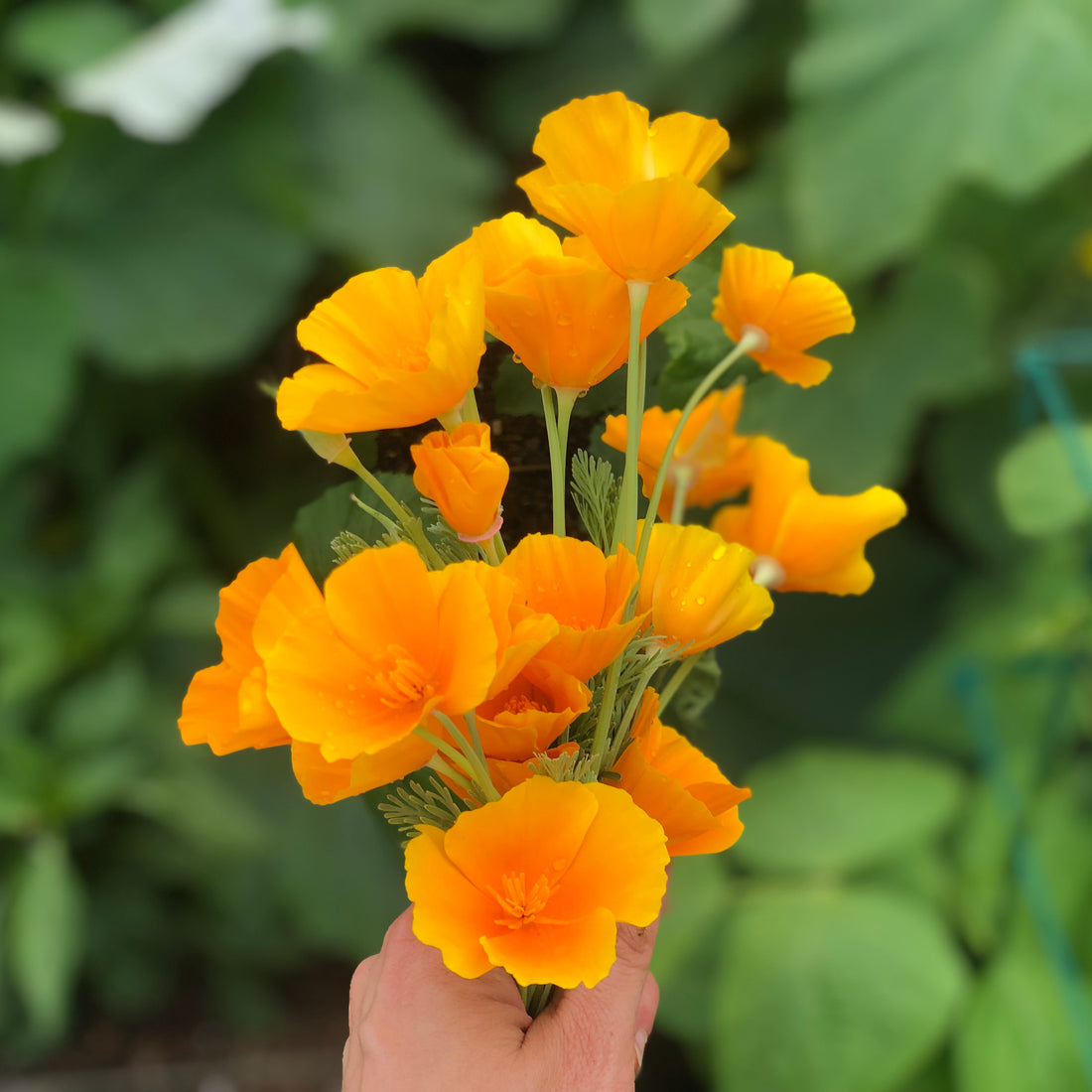
How to Grow California Poppies in the Southeast
Each spring, photos of Super Bloom inevitably crops up in my Instagram feed – rivers of visitors in a sea of exuberant orange, yellow, and purple, and romantic selfies set against normally barren hillsides that glows orange from miles away. Who could resist such a wondrous scene?
 Photo Courtesy of Emily Berl for the New York Times
Photo Courtesy of Emily Berl for the New York Times
This past spring, I decided to create my own "super bloom" in our Atlanta garden. But how could they flourish in such a different climate zone? It turns out, the winter temperature in the Antelope Valley area in Lancaster is strikingly similar to that in Atlanta, albeit the differences in rainfall.
 1. I started by ensuring the soil in our garden had plenty of drainage and that it would receive at least 6 hours of sunlight.
1. I started by ensuring the soil in our garden had plenty of drainage and that it would receive at least 6 hours of sunlight.

While California Poppies will grow in moist soil, it will not tolerate constant wet feet. For areas with the infamous, but minerals rich Carolina clay soil, amend it with a shovel or two of compost and you'll be ready to plant.
*Tip 1: California poppies are not heavy feeders, too much fertilizer will cause them to develop excessive foliage at the expense of producing those velvety blooms!
**Tip 2: Protecting the seeds from germination to the seedlings stage with a mesh tunnel will 100% increase the chance of their survival. I did it without this year, a wet spring almost caused the end of them.

See the yellow mesh tunnel towards the top of the picture here. For more elegant solutions for home gardens, you can use cloches with ventilation like these. **This is not an endorsement of the product, nor a paid advertisement.
2. Next, directly scatter the seeds 4-8 inches apart in all directions and cover with a light dusting of soil.
Ensure good seed-soil contact by dabbling the soil surface with a tamper. Give it a good shower, not strong spray. Cover with your tunnel or cloche and you're all set!
3. Last but not least, leave them alone.
When I say alone, I mean alone. California Poppies do not need extensive watering and feeding. They adapt quite well to poor soil conditions and will put up with some drought. They thrive in the dry desert valley conditions after all. Let them dry out a bit before watering.
4. In about 60 days (2 months), you will begin to see green, elongated, teardrop-shaped buds and a profusion of velvety orange blooms for 2 more months!
Once they start blooming, be sure to snip off the spent flowers to keep them blooming through the flowering season. Make sure to leave some faded flowers on the stems later in the season so they will self-seed and come back year after year!
|


 Photo Courtesy of Emily Berl for the New York Times
Photo Courtesy of Emily Berl for the New York Times

